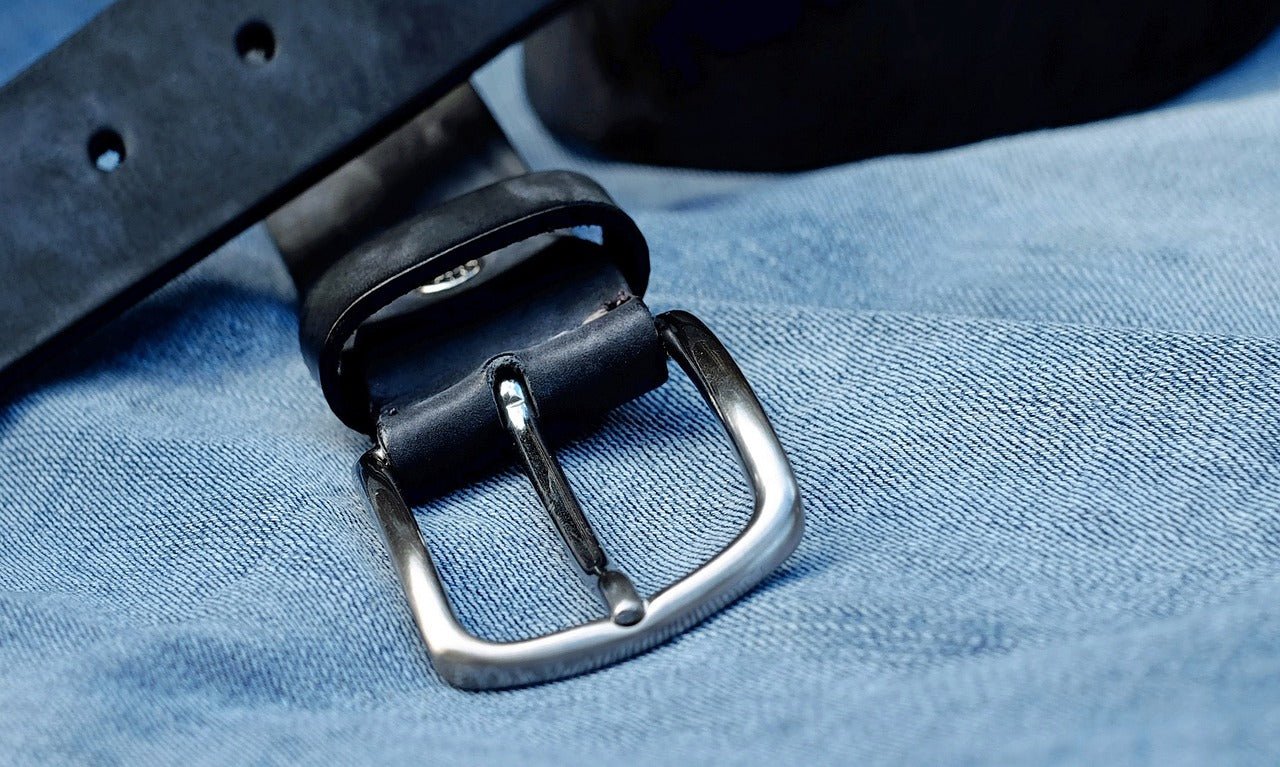Leather belts are not just functional accessories; they are timeless fashion statements that add class to any outfit. However, like any other leather item, they require proper care to maintain their appearance and durability. Neglecting regular cleaning can lead to drying, cracking, and a dull look.
In this guide, we will explore the best ways to clean a leather belt safely, without causing damage or drying it out. You’ll learn how to identify when your belt needs cleaning, the proper techniques to remove stains, the importance of conditioning, and how to maintain its longevity.
Recognizing When Your Leather Belt Needs Cleaning
Signs That Indicate It’s Time for a Clean
Not all belts require frequent cleaning, but here are some clear signs that indicate your leather belt needs attention:
-
Stiffness: If your belt feels less flexible and is becoming rigid, it needs conditioning and cleaning.
-
Visible Stains: Stains from sweat, body oils, ink, or food can diminish the belt’s appearance.
-
Unpleasant Odors: A musty or foul smell may indicate moisture retention, mold, or bacterial buildup.
-
Discoloration: Fading or dark spots may appear due to prolonged exposure to dirt, sweat, and the environment.
The Impact of Neglect on Your Belt
-
Cracking and Peeling: Leather naturally loses moisture over time. If left unconditioned, it can become brittle and start cracking.
-
Permanent Staining: Some stains, if not treated in time, can seep into the leather and become permanent.
-
Weakening of the Structure: Dirt and grime accumulation can degrade the leather fibers, making the belt more susceptible to damage.
Pre-Cleaning Considerations
Checking the Belt’s Material and Care Labels
Before you start cleaning, check if your belt has any care instructions from the manufacturer. Different types of leather—full-grain, top-grain, genuine, and bonded—may require slightly different treatments.
Materials Needed for Cleaning
Gather the following materials before you start:
-
Soft microfiber cloths
-
Mild dish soap or specialized leather cleaner
-
Leather conditioner
-
Soft-bristled brush (for deep cleaning)
-
Lukewarm water
-
White vinegar (for mold/mildew removal)
-
Baking soda (for odor removal)
Step-by-Step Guide to Cleaning Your Leather Belt
Initial Cleaning: Removing Surface Dirt
-
Lay the belt flat and use a dry microfiber cloth to wipe off any surface dust.
-
Prepare a mild soap solution by mixing a few drops of dish soap with lukewarm water.
-
Dampen a soft cloth in the solution and gently wipe down the belt in circular motions.
-
Use another clean, damp cloth to remove any soap residue.
-
Pat the belt dry with a towel.
Deep Cleaning Stains
Ink Stains
-
Dab a cotton swab in rubbing alcohol and gently blot the ink stain.
-
Avoid rubbing, as it can spread the ink further.
-
Wipe off any residue with a clean cloth.
Oil Stains
-
Sprinkle cornstarch or talcum powder on the stain and let it sit for a few hours to absorb the oil.
-
Brush off the powder with a soft cloth.
Mold or Mildew
-
Mix equal parts of white vinegar and water.
-
Dampen a cloth in the solution and wipe the affected area.
-
Allow the belt to air dry in a well-ventilated area.
Drying Your Belt Properly
-
Avoid Direct Heat: Never use a hairdryer or place your belt in direct sunlight, as it can dry out and crack the leather.
-
Air Dry: Hang the belt in a cool, well-ventilated space.
-
Maintain Shape: Store the belt flat or hang it properly to prevent warping.
Conditioning Your Leather Belt
Why Conditioning is Essential
Leather needs moisture to remain soft and flexible. Without conditioning, it may dry out and lose its natural oils.
How to Condition Your Belt
-
Apply a small amount of leather conditioner to a clean cloth.
-
Rub it into the belt using circular motions, ensuring even coverage.
-
Allow the conditioner to absorb for at least 30 minutes.
-
Buff the belt with a dry cloth to remove excess conditioner.
Polishing and Buffing
-
If your belt has lost its shine, use a leather polish.
-
Apply a small amount using a microfiber cloth and buff gently.
-
Use a soft brush for a smooth finish.
Preventative Measures and Regular Maintenance
Daily Care Tips
-
Rotate belts instead of wearing the same one daily to allow them to rest and retain shape.
-
Wipe down your belt with a dry cloth after each use to remove sweat and oils.
Proper Storage Solutions
-
Hang belts on a belt rack to prevent creases.
-
Store them in a cool, dry place to avoid exposure to excessive moisture or heat.
Troubleshooting Common Issues
-
If Your Belt Feels Too Dry: Apply another layer of conditioner.
-
If It Becomes Too Soft: Let it rest and avoid over-conditioning.
-
If Stains Persist: Repeat the cleaning process using mild solutions.
Maintaining your leather belt is simple with regular cleaning, conditioning, and proper storage. By following these steps, you can extend the lifespan of your belt, keeping it looking stylish and durable for years. For best results, consider using high-quality leather care products that deeply nourish and protect the material.
Pecard Leather Care offers premium-grade leather conditioners and cleaning solutions that help retain the belt’s moisture while protecting it from wear and tear. A well-maintained belt not only looks great but also lasts significantly longer.
FAQs
1. How often should I clean my leather belt?
A basic wipe-down should be done after every few wears, while a deep clean is recommended every 3-6 months or whenever stains appear.
2. Can I clean a leather belt that has metal components?
Yes, but avoid getting moisture on metal parts to prevent rusting. Polish the buckle separately with a dry cloth.
3. What are the risks of using household cleaners on leather?
Harsh chemicals can strip natural oils, leading to dryness and cracking. Always use mild, pH-balanced soap or specialized leather cleaners.
4. How do I deal with a belt that has developed a bad odor?
Place the belt in an airtight container with baking soda or activated charcoal for 24 hours to absorb the smell.
5. Is it safe to use water on leather belts?
Minimal water is safe if wiped off quickly. Avoid soaking, as it can cause stiffness and long-term damage. For long-lasting care, prefer Pecard Leather Care products, which provide deep conditioning and protection without damaging the leather.






